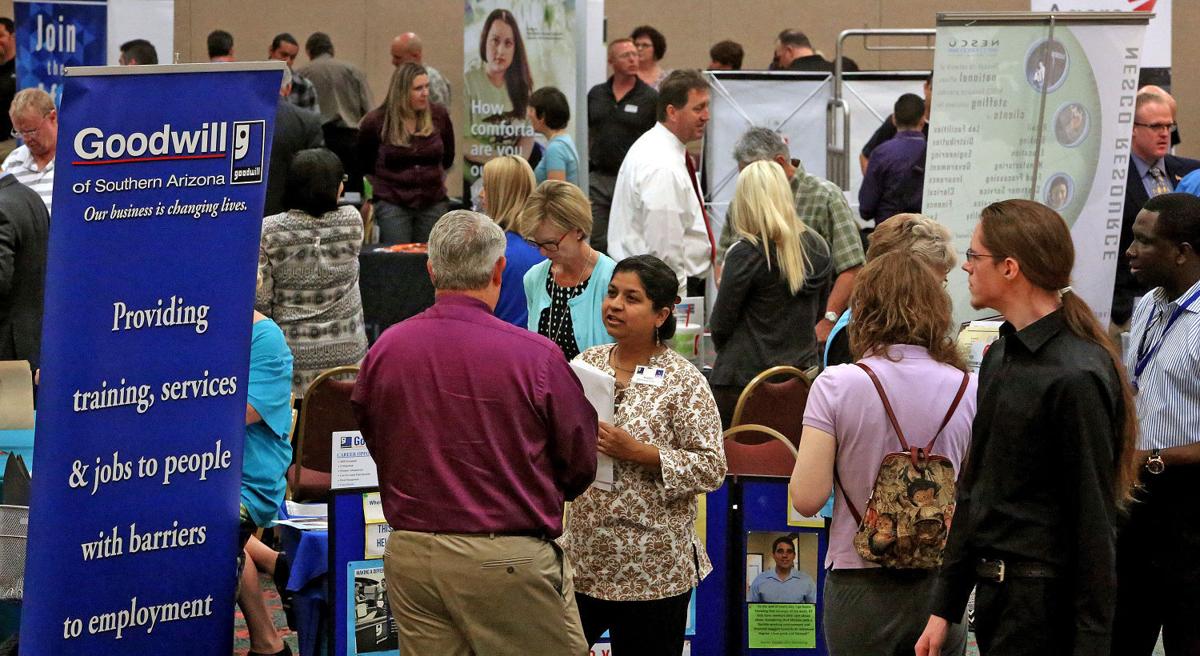PHOENIX — The road to economic recovery in Arizona apparently does not go through Tucson.
Data presented Thursday by a panel of state economists finds Pima County lagging the rest of the state in job growth.
How bad is Pima doing?
Overall, Arizona has recovered more than 250,000 jobs since the economy hit bottom five years ago. Put another way, four out of every five jobs are back.
But Pima County, which bottomed out employment-wise in July of 2011, has added only 15,500 jobs since then. That brings the county less than half way back to its employment peak of 387,000 in March 2007.
That’s not the only problem.
State population is expected to grow by 1.5 percent this year and 1.7 percent in 2016. That is anemic in comparison with the average 3.2 percent growth rate prior to the recession.
But forecasts from the University of Arizona put this year’s Pima County growth rate at just 0.8 percent, perhaps reaching a full percentage point next year. Between 1975 and 2007 the county grew at a rate of 2.4 percent.
“Wage growth has been low,” said economist Jim Rounds, a member of the state’s Finance Advisory Committee. “Job growth has been weak.”
And in case the message was lost in the numbers, Rounds put it in simpler terms for those at Thursday’s briefing.
“It’s just been a complete mess in Tucson for the last 10 years,” he said.
George Hammond, director of the Economic and Business Research Center at the University of Arizona’s Eller College of Management, said there are factors that could complicate recovery efforts in the area.
One is that the dollar is strong against other currencies. That makes it more expensive for Mexican shoppers armed with pesos to come to the area to buy American products.
And if the strong dollar was not causing enough problems, copper prices also are soft.
“The combination of falling copper prices and rapidly rising value of the dollar is typically a problem for commodities producers looking to export,” Hammond explained. Still, he said overall exports to Mexico seem to be holding steady.
Hammond, also a member of the Finance Committee, said other factors also can affect business with Mexico.
“A lot of things matter for trade: the ease of getting across the border, relationships,” Hammond said. Income and production growth in Mexico will also affect what Arizona can sell.
Rounds said he figures it will take well into the next decade for Pima County to recover.
“The economic base is just going to be tough there,” said Rounds, who is senior vice president of Elliott D. Pollack & Co., a firm the state has traditionally relied on for some of its economic forecasting.
“Pima County is extremely dependent on federal government expenditures related to defense,” he added. “And we’re just seeing those dwindle. ... They have to create some high-paying jobs just to replace the ones being lost. And then they’ve got to figure out how to add to that. So it makes it even more difficult.”
A bright spot, Rounds said, is the presence of the University of Arizona. That means access to a skilled workforce.
But many of those new graduates can’t find work locally once they have their degrees.
“There are relatively few high-paying industries compared to, say, greater Phoenix or some other competitor markets,” he said.
“A lot of really high-quality graduates come out of there and they would like to stay in the area, but they’re not finding the jobs that they want,” Rounds said. “So they’re migrating up to Phoenix or they go to some other community in one of our competitor states that are hiring in those particular industries.”
Even so, Rounds said he has reason for optimism, starting with the Tucson City Council’s choice of Michael Ortega earlier this year as city manager.
“I feel like we finally have a county manager and a city manager down there that understand one another,” he said, also praising Pima County Administrator Chuck Huckelberry. “And, at least on the government side, people are going to be on the same page,” able to work together to promote a coordinated economic development program, he said, although he added: “I’m not sure about the politicians yet.”
It’s not just Pima County that’s lagging. Rounds said he expects “very weak growth” in the state’s other 13 counties.
But, overall, they have fared somewhat better than Pima County. They have added 29,200 jobs since the bottom of the recession, bringing back more than 63 percent of the jobs they have lost.





